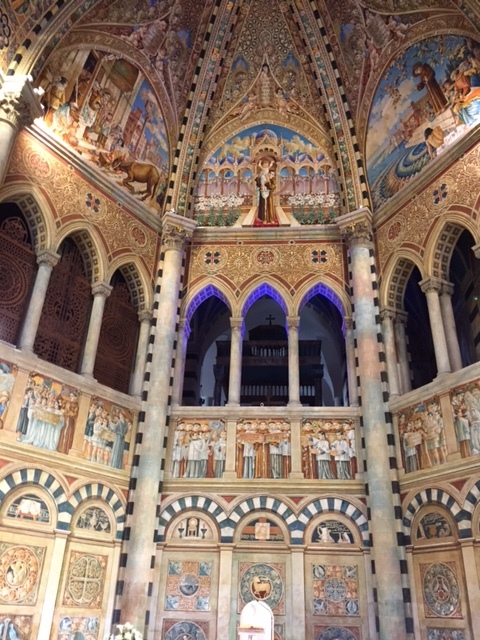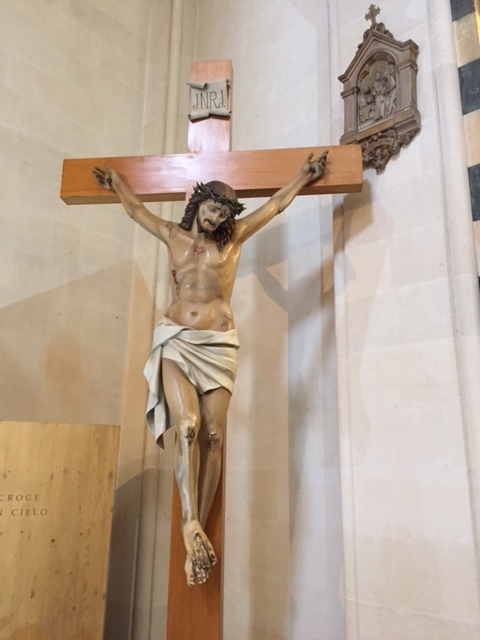Almost everything in Italy, even mundane daily transactions, falls into the category of drama. Overheard street conversations, people ordering coffee in a sidewalk cafe, overheard one-sided cell-phone conversations, that one seems inevitably exposed to everywhere these days, and all of this and more seem like something urgent, even a matter of life-and-death that hangs in the balance. Perhaps this should not be too surprising. After all, much dramatic opera finds its roots in the Italian culture. High drama.
I would certainly say that about the three days that are the culmination of the celebration of St. Nicholas in Bari. The official program lists four separate fireworks displays - two during the day. Go figure. There was an airshow by the Italian Air Force right before we had Evening Prayer one day. The way the heart of Old Town Bari is illuminated with millions of lights is stunning. There were several processions.
We attended the mass that is the pinnacle point of the entire celebration. Peter Sills was in that service and said there were at least fifty priests involved in the service. There was an orchestra, choir with soprano soloist, children's choir and more. Thousands of people were in the standing-room only crowd inside the cathedral. Plus, there was a huge screen outside where the proceedings going on inside were displayed to the huge overflow crowd standing in the courtyard in front of the Basilica. The elements were served to any who wished to go forward.
After one fireworks display we walked into the heart of the Old Town Bari where a shrine had been installed with the likeness of the statue of St. Nicholas. The crowd was as intense as anything I've experienced. I would liken this entire celebration to a combination of New Year's Eve in Time's Square and the big parade at Mardi Gras.
Most religions involve a lot of dramatic rituals. Certainly that is true of the Catholic/Orthodox side of Christianity. Worship services are high dramas. Art and ritual are frequently used. One of the sad side effects of the Reformation was that the Protestants felt the need to abandon, even destroy, much of the art and discontinue most of the rituals. This is why in many European churches, particularly those found in Great Britain, the faces of statues have been hacked away. Priceless art destroyed in the name of religious correctness.
An aside: I had anticipated more time on this pilgrimage to contribute to this blog. We now leave Bari and head back to Rome before returning to Houston. Perhaps these travels will offer me more time for reflections that I can share with you. Again, my HUGE "thanks" to Wayne Herbert for doing the work to put together text and photos to make this work.
Our lives are constructed of rituals. Many of them mindless, like frequently checking our devices for messages. Employing ritual into our lives to remind us of our true identity, why we are here and who our brothers and sisters are can only enrich our lives.



























